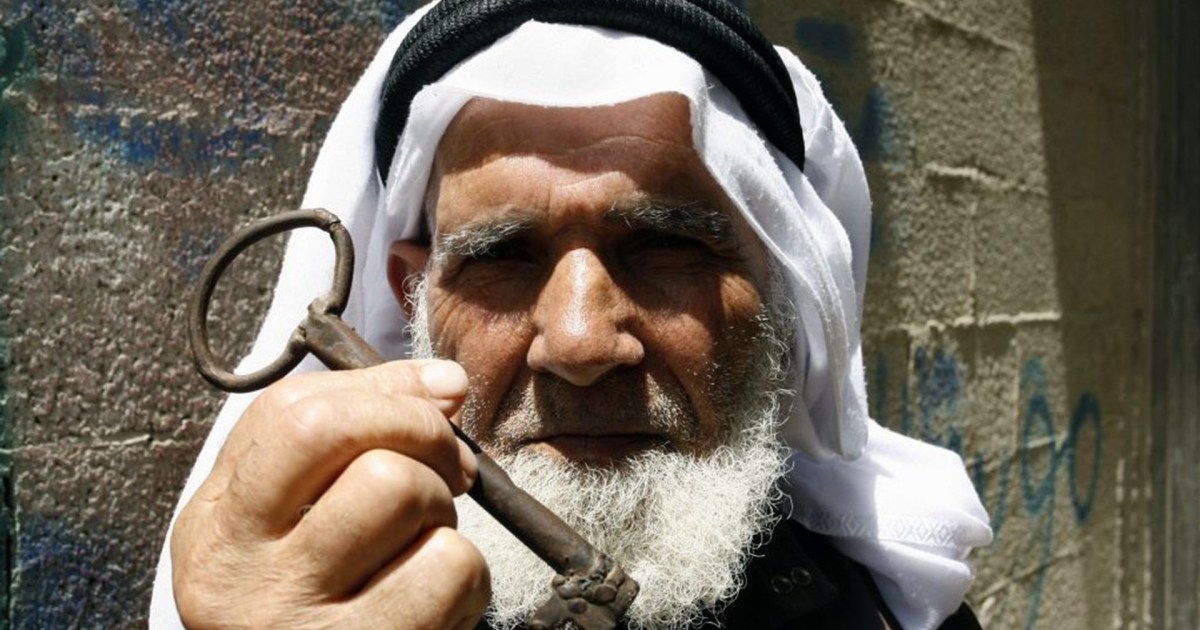The exiles, near and far, were the refuge of the Palestinians who were forcibly displaced due to the ethnic cleansing practiced by the Israeli occupation against them, and these exiles became a haven for about 80% of the Palestinians of the world, who reached the fourth and fifth generation in them, and the number of those recognized by the United Nations Relief and Works Agency for Palestinian Refugees in the Near East UNRWA has about 5.5 million refugees.
In addition to the countries of distant diaspora, hundreds of thousands of Palestinians have resorted to living in 64 camps in neighboring Arab countries such as Syria, Lebanon and Jordan, and these camps remained a bet on the political conditions in each country, and many events that affected the lives of Palestinians there have witnessed.
The Yarmouk camp, south of the Syrian capital, Damascus, is considered the largest Palestinian camp in the world before it was destroyed. It was built in the 1950s and housed a quarter of a million refugees, before it was completely destroyed during the war in Syria, which prompted its residents to seek refuge again, either inside or outside Syria.
Muhammad al-Sammak, a refugee in the Yarmouk camp, tells about his memories, and his refusal to seek refuge again in any country and prefers to stick to staying in the camp to visit the graves of his parents, and affirmed that he will not hold any key in order to return to it other than that of his grandfather's house in Palestine.
Elderly Alia Al-Shihabi also spoke about the difficult living conditions that she lives among the rubble of the camp after its destruction, and refused to delve more into the conversation, citing the bitterness that she lived, insisting on her right to return to her native Palestine, even if she was barefoot.
In Lebanon, the International Committee of the Red Cross established Ain al-Hilweh camp in 1948 to accommodate refugees displaced by the Israeli occupation, and Ain al-Hilweh is the largest refugee camp in Lebanon, and its population until 2014 is estimated at 120,000 refugees. UNRWA registered about half of them, and the camp's area is 1.5 kilometers. Square meters.
Reham Hajjaj, who studied banking and finance, spoke of her dream of getting a job in a bank, but that did not happen, forcing her to accept working in a small grocery store in the camp, adding that she and her peers from the young men who studied see themselves as not alive due to the lack of job opportunities.
She continued her discussion of the difficulties they face inside the camp, where there is a lack of electricity and water, and simple medical services that UNRWA was providing for them, and she warned that children would drop out of schools due to the severe pressure on schools inside the camp, stressing her adherence to the right to return to her homeland Palestine and her rejection of any other nationality in exchange for giving up Her native country at any cost.
In Jordan, the Baqa'a tents are considered the largest Palestinian refugee camp in the world currently, and it is one of the 13 Palestinian refugee camps in Jordan, and UNRWA runs 10 of them, and the camp is inhabited by more than 120,000 refugees in an area of no more than 1.5 square kilometers.
Nafez Abu Hajar, who worked as a journalist for the Saudi newspaper Okaz before leaving Saudi Arabia to Syria and from there to Jordan and then Iraq before returning to Jordan and to the Baqaa camp specifically, and is currently working in the sale of eggs and cakes, speaks that he does not waive his right to return to Palestine, whatever the alternative. .
As for Palestine, the number of camps reaches 27, 19 of which are located in the West Bank and 7 in the Gaza Strip. Refugees live with the bitterness of displacement and the bitterness of looking at the settlements that were built on their homes, in the Shuafat camp in Jerusalem, which the displacement began to in the year 1965, where he lives The camp is about 24,000 refugees, only half of whom are registered with UNRWA, and it covers an area of about a quarter of a square kilometer.
The camp is located within the Israeli borders, where its residents obtain an Israeli civil identity that does not give them the right to full citizenship, and the occupation authorities deliberately neglect the camp, and the camp residents believe that they live in a large prison because of their denial of freedom of movement.

